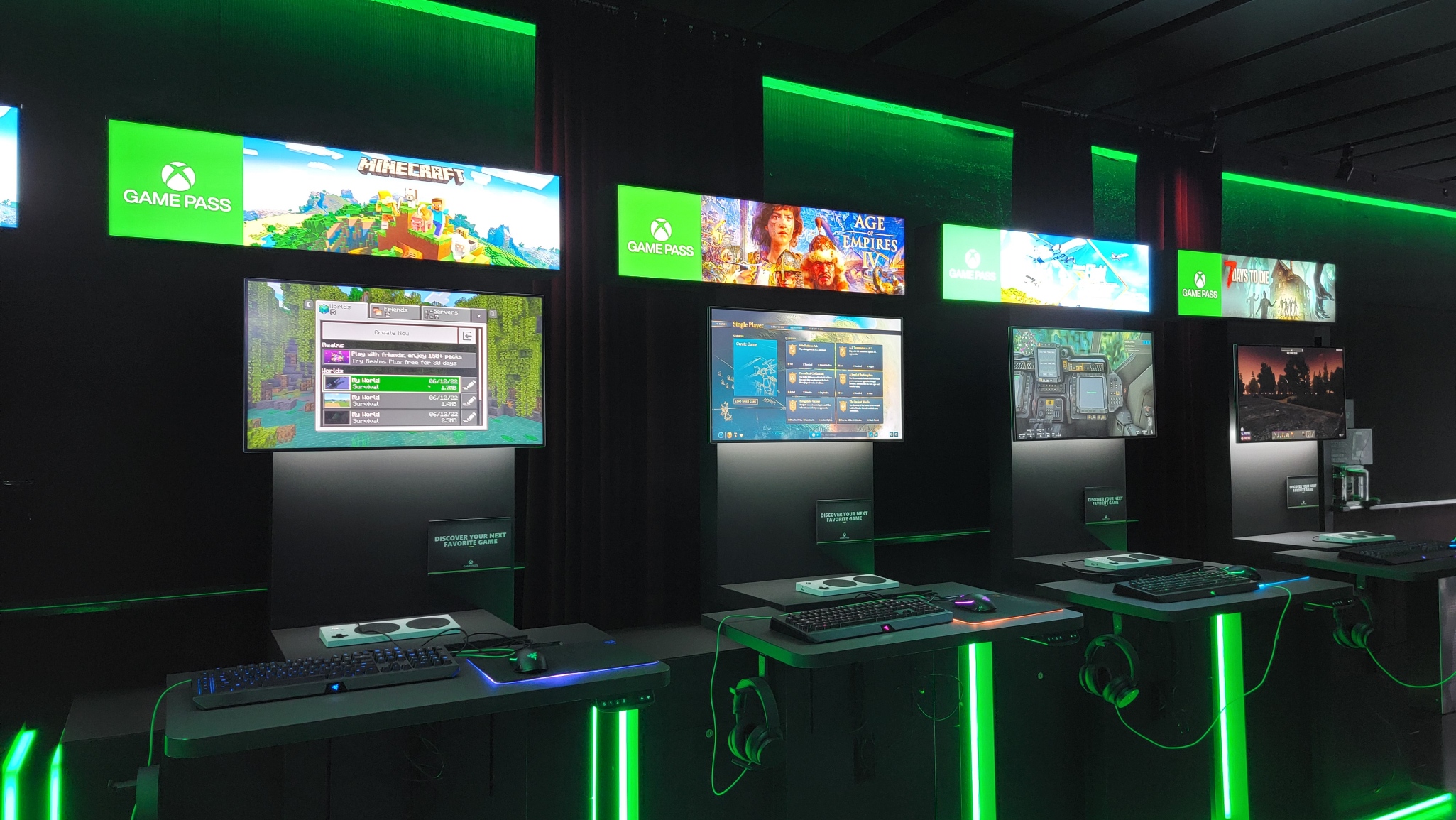Playbook for Accessible Gaming Events Guideline 107: Game Demo Stations
Many gaming events will use demo stations to showcase game experiences, whether they are pre- or post-release. These stations tend to attract a lot of attention, so ensuring that they are accessible means ensuring guests will have a good time experiencing the gaming content your teams have worked so hard on.
If you answer "Yes" to any of the following questions, this guideline applies to your event:
- Does your event have demo stations or kiosks where attendees can play games?
Consider implementing the following guidelines for your event.
Height
- Monitors should be adjustable height, ideally being able to shift as low as 48 inches from the ground and as high as 72.
Angle
- Monitors should be able to tilt, ideally at a 30-degree angle from the center, up and down.
Brightness
- Monitors should be able to easily have their brightness adjusted.
Height
- Tables upon which controllers and other materials sit should be adjustable in height (like a sit/stand desk) on the fly, so wheelchairs may roll up to and under them. They should be able to raise to as high as ~48 inches and lower as low as ~28 inches.
Example (expandable)

The demo station on the left has an adjustable desk that raises or lowers with the press of a button.
Sturdy
- Tables should be sturdy enough to have someone of substantial weight use them to support themselves.
Color / Contrast
- Tables should stand out such that they can be easily seen in a darker room to avoid customers running into them or tripping.
Wipes
Tables should have sanitizing wipes to clean stations before and after use.
A receptacle should be provided to collect used wipes.
Staff should be available to help monitor stations and wipe them as needed.
Hand Sanitizer
- Each table should have hand sanitizer available, ideally in an automatic dispensing unit.
Standard controllers
Each station should have a minimum of two controllers for guests who wish to copilot two controllers together.
Controllers should have long cables to reach at least 3 feet from the edge of the table upon which they sit.
Adaptive controllers
- Each station should have an adaptive controller present at it. In cases where this is not possible, stations should have cables available to quickly connect an Adaptive Controller if needed.
Example (expandable)

The game stations below each have an Xbox Adaptive Controller connected.
A wide variety of additional buttons, switches, and joysticks to connect to Adaptive Controllers should be in an easily available area for staff when an adaptive setup is required.
Buttons should have Velcro backing and be accompanied by lapboards that the buttons can be stuck to.
Title-Specific
- Stations should have QR codes with short-URLs and braille underneath that, when scanned / entered in a browser, take the gamer to accessibility information on the demo. Note that it does not need to be final information; just what settings are contained in the demo. It is recommended to use short URLs so you can redirect them for different pages and reuse the signs, since printing braille can be expensive.
Chairs
- Providing seating or having easy access to folding chairs can be helpful for gamers who have difficulty standing for extended periods of time.
None currently.